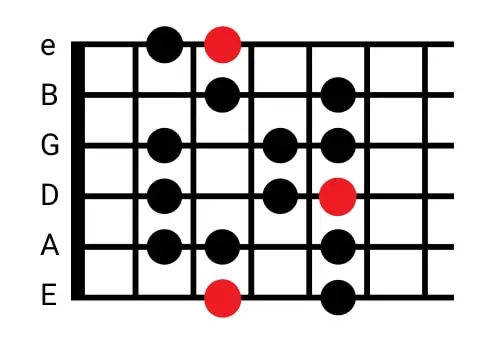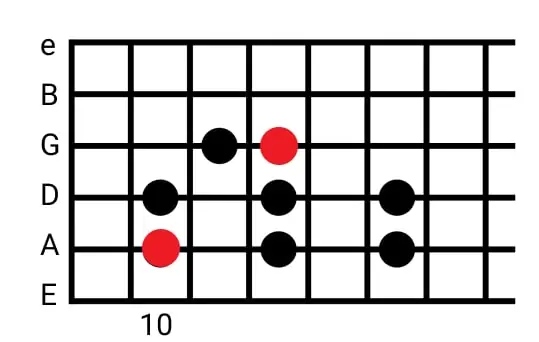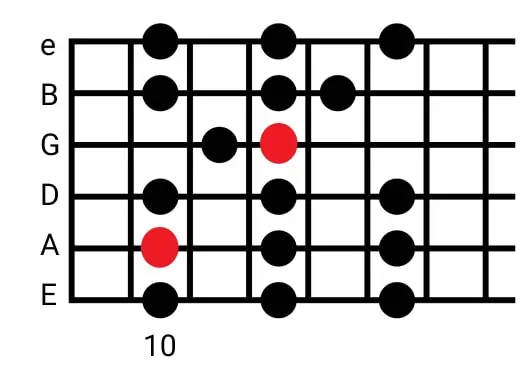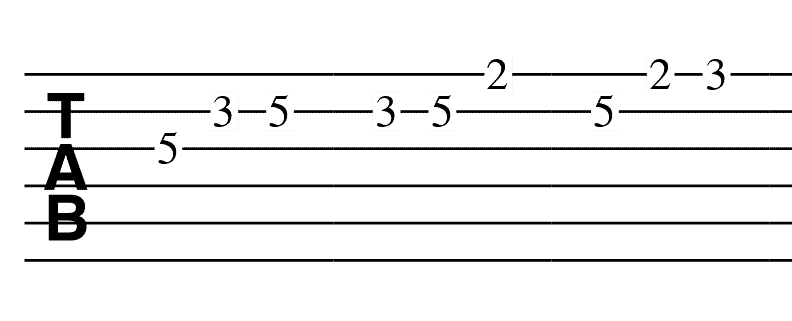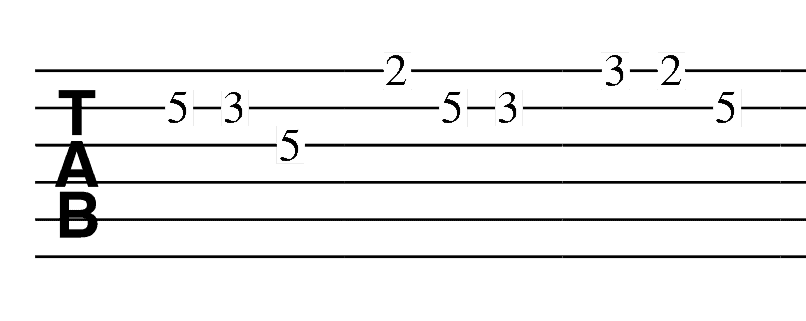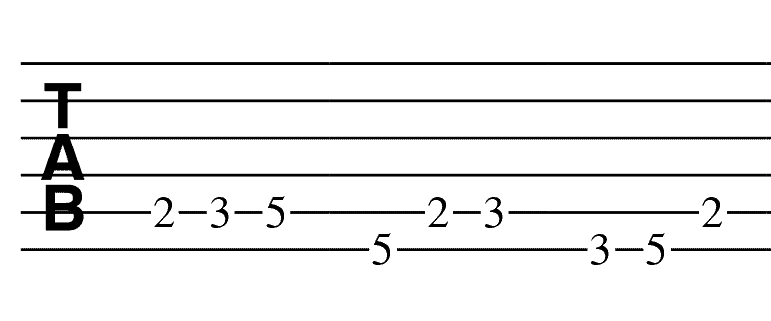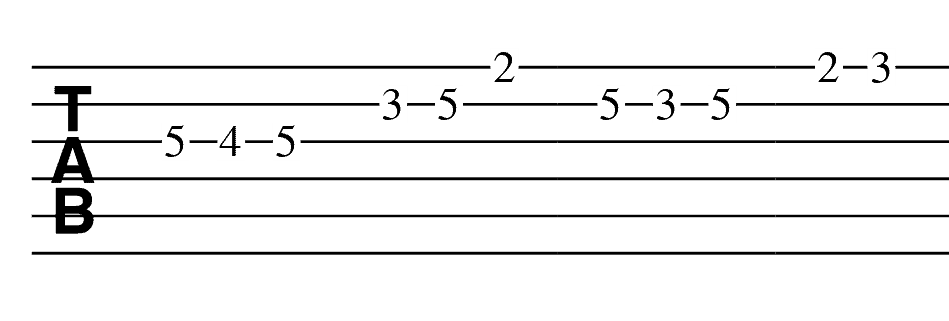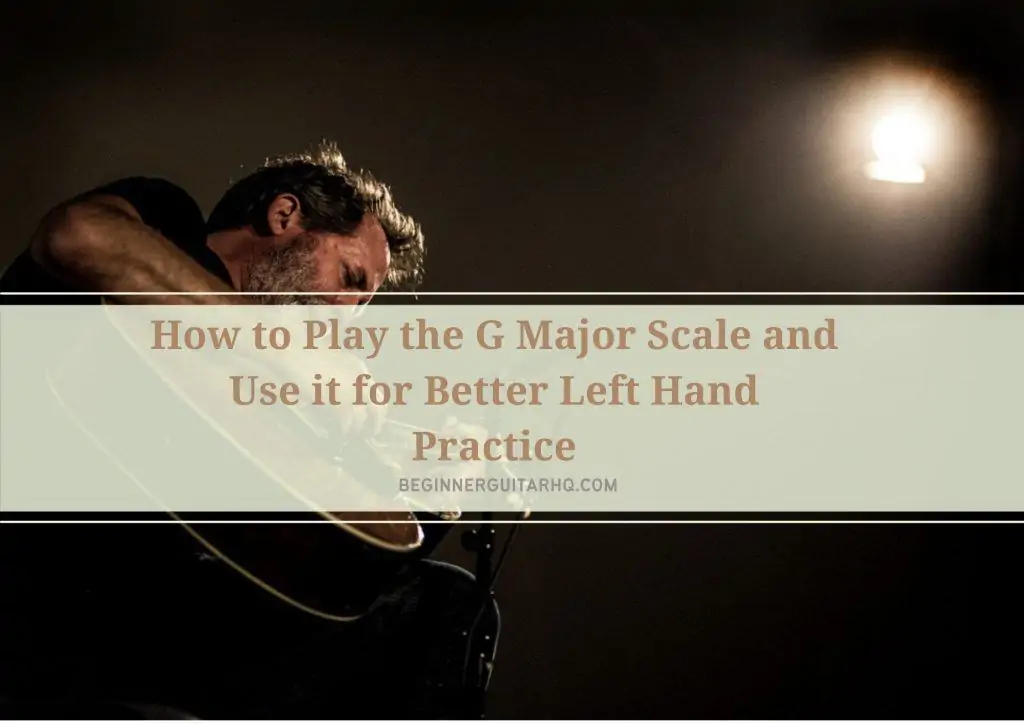Today, I’m going to introduce you to the G major scale. I’m going to be honest. Many guitarists, particularly in the first while that they start playing scales, end up getting bored, frustrated, and even annoyed. I mean, a scale in and of itself is kind of boring. But they are something that all guitar teachers recommend.
And sure, if you just play your scales up and down the whole time, boredom is going to set in pretty fast. We all want to make music and scales don’t sound like music. But scales are what solos and melodies are made of.
Not only are you going to learn how to play the G major scale today, but how to use it in a way that sounds a little more musical and gives your left hand (or right hand if you are left-handed) good practice.
G Major Scale Theory
If you look at the circle of fifths, you’ll see that G at the 1 o’ clock position on the outside of the circle (indicating that it’s major). That’s because there is only one sharp (#) in G major, and that’s F#.
Written out, the scale looks like this:
G, A, B, C, D, E, F#
This is what we’ll be playing written out in sheet music with the notes written below in the versions where there are two octaves:
Two octaves of the G major scale
An octave spans 8 notes. So from G to G is an octave.
As you can see by the key signature, which is next to the treble clef, there is one sharp, F#. This indicates that every F needs to be an F Sharp unless indicated otherwise and that the key is G.
In terms of how to actually construct a major scale, there is a simple formula: W W H W W W H.
W stands for whole step, H stands for half step. This is best demonstrated with piano keys.
The white notes are the whole steps and the black notes are the half steps. On the guitar, every fret is a half note. So when you want a whole step, you skip a fret, and if you want a half step, you play the next fret.
This is easier to see if you play scales on one string. But as you get to know the notes on the fretboard, you will see that this is what’s happening even when you play across all the strings.
How to Play the G Major Scale on the Guitar
There are a few places on the neck where you can play the G major scale. With each of these scales, take your time in the beginning. There is no rush. It can feel a little weird and be tricky for your fingers to play a scale if you’re used to only playing chords. Your fingers move in a whole new way.
Practice playing these scales up and down. Once you can play them well slowly in both directions, you can start to work on increasing your speed slowly.
You can either use your fingers to pluck the strings or use a pick by moving it up and down in a technique called alternate picking.
Version 1
This follows the caged shape for the major scale. You can move this scale up and down the fret board using the root notes on the low E string (6th).
G is found in the third fret and as you can see, it’s the first note that you play. The low E string is indicated by the E as opposed to the high E string which I called e.
The best way to play this is to designate each finger to a specific fret. Use all four fingers:
- Index finger: Fret 2
- Middle finger: Fret 3
- Ring finger: Fret 4
- Pinky finger: Fret 5
Play the dots in order making sure to play the all the dots on one string before going to the next one. Start from the G in fret 3 on the E string which is at the bottom. All the G notes are marked in red.
G major scale version 1
If you’ve played it correctly, you would hear the notes ascending with a happy tone and when you get to the high G in fret 3 on the low e string, it should sound complete. In other words, it should resolve nicely. If it sounds like the G isn’t “home”, something went wrong.
Version 2- Fret 5
This scale starts further down in fret 5. Here is the version with one octave of the G major scale from root to the octave.
Remember that the lowest red dot is the root note that you start from in fret 5.
G major scale version 2
I’ve only done from G to G here so that it’s less confusing. But to play all the other notes of the scale in this position, here you go:
G major scale version 2 full notes
Just note that if you aren’t starting and ending on the root or octave, the scale is going to sound incomplete, like it still needs to resolve. Still, it’s useful for getting around the fretboard and even learning the notes.
Version 3- Fret 10
This version includes the root note in the 10th fret. This first pattern is just from the root to the octave again for convenience.
G major scale version 3-
Here are the rest of the notes of the scale in this pattern:
G major scale version 3 full notes
Version 4- Fret 10
This version of the scale still uses the root in the 10th fret on the A-string, but instead of using the G in the 12th fret on the G-string, it uses the 8th fret on the B-string. You’ll notice that most of the notes occur above or in the 10th fret as opposed to in and below it.
As with the last two versions, here it is just from root to octave:
G major scale version 4
Here are the rest of the surrounding notes in the scale:
G major scale version 4 full notes
Using the G Major Scale for Better Left-Hand Practice
Here are some exercises that will help you to increase your speed as well as your dexterity. Using certain notes out of the scales can be real finger twisters. You’ll get used to playing different combinations of the notes and start crafting your own solos. You may also recognize parts of existing solos and be able to work them out easier without even needing to look at the tabs.
Practice with a Metronome
Now, this may seem like added pressure, but playing in time is very important. You’ll learn to play consistently and have a way of measuring your progress too.
You can find metronome apps for use on your phone, unless you like to go old school. Both digital and analog is fine, although I do find it easier to hear the physical metronome if I’m playing loudly. Otherwise, I use Soundbrenner.
You don’t need to start fast straight out of the gate. The key here is to practice right. It doesn’t help you play fast but can’t stay on the beat properly. In other words, sloppy practice habits become sloppy playing.
Start as low as 40 bpm if you need to. Then, once you’ve mastered playing at a particular bpm, move up in 2, 5, or even 10 beats faster per minute. It’s up to you.
Do this as you practice the scales themselves, and once you practice the various note combos.
Practicing in Threes
I’ve started with three notes because there are five different patterns you can use here and you don’t need to skip any frets. But don’t let that fool you. Some of the patterns will at least get your brain working a little harder the first few times.
I will demonstrate them using version 1 of the scale since you can play over two octaves there and be able to end and start on G to make it a little easier.
I will show you the patterns using tabs. If this is the first time you’re using tabs, don’t worry, it’s pretty simple for these exercises. The 6 lines indicate the strings and the numbers indicate the fret. Click the link to learn more about how to read tabs.
Exercise 1
G major in threes exercise 1
Exercise 2
This one has a few extra notes up the neck at the end to keep it consistent. You can play the 7th fret with your pinky. But if you prefer, you can stop at the 3rd fret, which gives you a G.
G major in threes exercise 2
Exercise 3

G major in threes exercise 3
Exercise 4

G major in threes exercise 4
Exercise 5

G major in threes exercise 5
Exercise 6
G major in threes exercise 6
Practicing in Two’s
This exercise will get you used to skipping notes while staying in the key. Practice this one forwards and backwards.
G major in two’s exercise
Arpeggios
Here are two arpeggios that you can use to familiarize yourself with the key and give your fingers a workout. Essentially, you’re going to be playing the chords within the key of G. But instead of the usual shapes that you strum to, you’ll be picking the notes one by one using the scale shape.
These triad chords are built on the 1st, 3rd, and 5th interval of the scale.
G A B C D E F#
1 2 3 4 5 6 7
It might seem confusing when you see all the different chords, but remember that these sequence of notes repeat, they just go higher or lower. In this case, we’re ascending. So the interval numbers would just get moved up.
For example:
A B C D E F# G
1 2 3 4 5 6 7
But note that I stayed in the key of G major which only has one sharp.
Major, Minor, and Diminished Triads
Some chords are going to sound different. You’ll be playing the following:
- G B D (G major)
- A C E (A minor)
- B D F# (B minor)
- C E G (C major)
- D F# A (D major)
- E G B (E minor)
- F# A C (F# diminished)- this one is going to sound very strange if you aren’t used to it.
G major arpeggios
Seventh Chord Arpeggios
Seventh chords are triads with the 7th interval added in. You’ll notice that the F#o7b5 or F#dim7b5 (F# diminished seventh flat five- yes, quite a mouth full) and the final G7 are tabbed based on the scales based on the G in the 10th fret.
With the F#dim7b5, just note, this is not a very nice sounding chord. It’s going to sound wrong. Horribly. But that’s just the nature of this chord. And if you’re wondering why anyone would ever write music that contains this chord, you aren’t alone. But these rather nasty sounding chords add a lot of tension. Think of it as artistic expression.
G major seventh arpeggios
Conclusion
Well, there you have it. The G major scale and some useful exercises. You can get creative and make up your own patterns. Have fun and create solos when you’re ready and write your own songs.

Cheanné Lombard lives in the home of one of the new Seven World Wonders, Cape Town, South Africa. She can’t go a day without listening to or making music.
Her love of music started when her grandparents gave her a guitar. It was a smaller version of the full-sized guitars fit for her little hands. Later came a keyboard and a few years after that, a beautiful dreadnought guitar and a violin too. While she is self-taught when it comes to the guitar, she had piano lessons as a child and is now taking violin lessons as an adult.
She has been playing guitar for over 15 years and enjoys a good jam session with her husband, also an avid guitarist. In fact, the way he played those jazzy, bluesy numbers that kindled the fire in her punk rock heart. Now she explores a variety of genres and plays in the church worship group too and with whoever else is up for a jam session.


